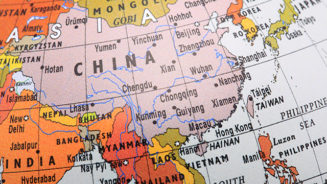On geographical allocation, while he has views on what is going on around the world, it is very much dependent on what stocks can be found. “A generally held view we would agree with is that the US is more mature in the economic cycle and is trading at higher multiples relative to others. Therefore, there is most likely more value outside the US.”
But he adds that if tomorrow he found an idea in the US “it would not bother us one bit” to increase allocation there.
Currently, the portfolio is underweight the US, overweight Europe and Japan, with no exposure to Asia. Mahindru adds that the portfolio does not invest in emerging markets. “It is not an anti-emerging market view, but how you want to tackle the world,” he says.
Emerging factors
The portfolio, he says, typically has company holdings with a market capitalisation of $5bn plus, which poses a problem in the sense that developed markets are “super-efficient”.
Some of the largest tech companies have a large number of sale-side analysts who cover them. This means within 24 hours of a company reporting its results there are numerous reports giving interpretations of these results, and Mahindru says there is no point in trying to outguess them.
“I would much rather play the long term, predicting what big technology companies will look like in three or five years’ time, or any other stock over that period.”
He says the inefficiencies in emerging markets are enormous and economic factors are far more prevalent because, in general, they tend to be much more local, single-country businesses.
“We could easily add one or two emerging market stocks here and say, ‘Look, we cover emerging markets’ but we would be taking on so much stock-specific risk because Indonesia, for example, may default, or something extreme could happen.”
Ultimately, the concentrated portfolio of 34 stocks are selected on the basis of whether he and his team are happy to own a business for themselves.
“Forget for a minute there is a stock market and there is a share price. The question is are you happy to own this business yourself? Is it a business you would want to own for your family? These are the questions we ask. If a business does not generate cash, that is often seen as a warning signal.”
One of his top 10 holdings, Yum!, is nice example, he says, explaining that it is effectively several businesses in one – KFC, Pizza Hut and Taco Bell.
“Taco Bell, the fast-food Mexican restaurant, is not really in the UK, while KFC and Pizza Hut in the west are franchise businesses. Businesses with a franchise model just get a percentage of the revenue, which can offer a very high return on capital.
“If you want to own a franchise, you give the franchisor £100,000, you fit out the outlet and then you have to pay them for the ingredients etc. All the franchisor does is to take 10% of the business’ revenue.”
Model business
It is a wonderful business model, he says, not a fast-growing one but very cash-centric.
“These types of businesses tend to trade on quite high multiples because of the predictability, strong cash generation and small but continued growth. They have a very fast growing emerging market business, particularly in China where they love fast food.
“In China, as the franchise model has not penetrated as much, it is not as developed there. They have to build out the restaurants themselves. They have much faster growth but are less cash generative, because they have to spend to grow.”
A food scare 19 months ago in China meant that fast food companies’ share prices dipped, presenting a buying opportunity. In the end, it was revealed that it was a minor issue involving one ingredient that got blown out of proportion in the ensuing coverage. A number of brands were tainted and there was a de-rating that meant Mahindru identified an opportunity in the sector.




